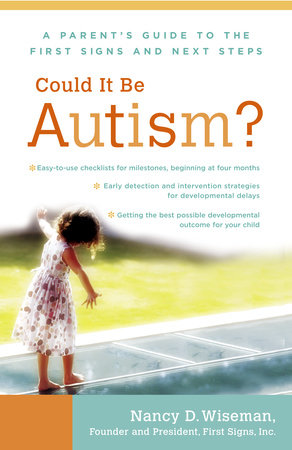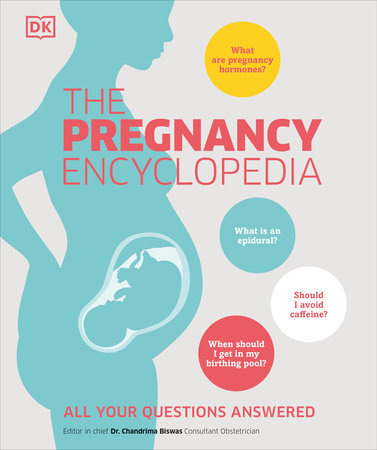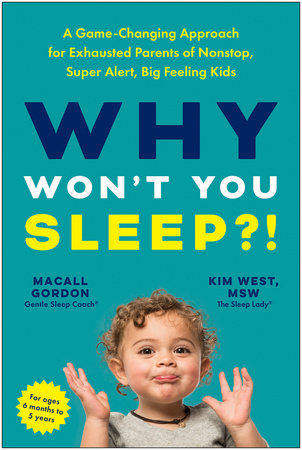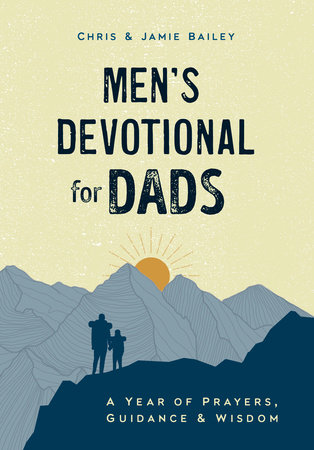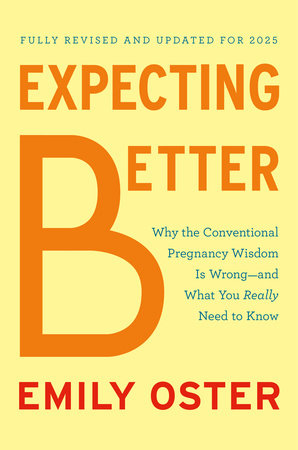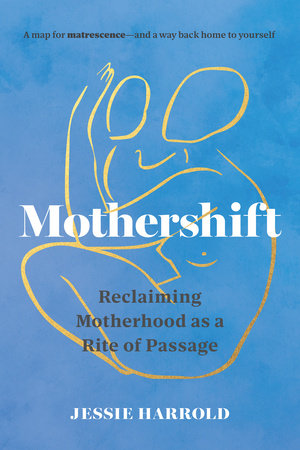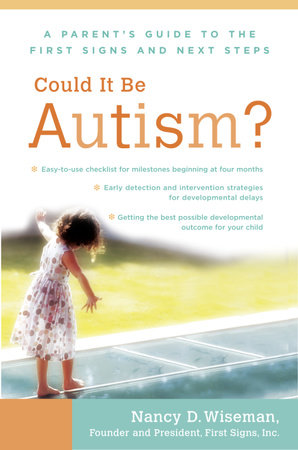Author Q&A
How is your book different from all the other books on autism?
COULD IT BE AUTISM? is for any parent who has concerns about a child’s social, emotional, behavioral, or communication development. My book explains the steps parents can take to confirm or rule out a developmental delay as early as four months with our easy-to-use checklist of healthy developmental milestones and through the use of accurate screening measures, which we include in the book. We empower parents to act on their instincts and initial concern, rather than to “wait and see”. Parents will learn what to do if their concerns turn out to be justified, how to get a diagnosis, what to expect, how to design and launch the best intervention plan based on their child’s unique developmental profile, and how to really advocate for their child. Could It Be Autism? is about giving parents hope–hope that they can give their child what he or she needs to have the best life possible.
Why did you start First Signs and how did you become inspired to write this book?
First Signs was born out of my own personal experience. When my daughter was diagnosed at the age of two, there were no books or Web sites to help guide me through the screening, diagnostic, referral, or treatment process. I didn’t know who to see, where to go, or what to expect. It was because of Sarah’s early struggles and amazing accomplishments with intensive early intervention that inspired me to create First Signs and, ultimately, to write COULD IT BE AUTISM? No organization existed with an emphasis on early identification, so I founded First Signs to give other children the early and important start they need.
What is First Signs?
First Signs, Inc. a national non-profit organization dedicated to educating parents and pediatric professionals throughout the world to recognize and identify the "first signs" of developmental delays and disorders in early childhood, including autism. We focus on the critical and often overlooked aspects of development: Social, emotional, communication, and behavior. Our mission is to promote the best developmental outcome for every child through public awareness and education. Our goals are to improve early identification through a simple screening method, to facilitate timely referral of children to early intervention programs, and to lower the age at which most children are diagnosed. It is possible to mitigate a full-blown disorder if you intervene early enough and, in some cases, children can become indistinguishable from typically-developing peers.
Have your programs resulted in any change?
In a few short years, First Signs has helped to change policy, improve awareness, and change pediatric practice in how we screen, refer, and detect young children who are at risk for autism and other developmental disorders. To date, we have launched public awareness and training programs in New Jersey, Minnesota, Pennsylvania, Wisconsin, Alabama, and Delaware. We have provided outreach to thousands of families and information to hundreds of thousands of individuals and organizations worldwide. First Signs has received requests to launch our program in more than 47 states and five countries. The Minnesota First Signs program resulted in a 75% increase in the number of children in the 0-2 age group identified with autism spectrum disorders (ASD).
Why is there such a need for change?
According to the CDC, 1 in 6 children has a developmental, behavioral, or learning disability. Autism is the fastest growing developmental disorder in the U.S., affecting as many as 1 in 166 children. The average age of diagnosis is between 3 and 6, despite the fact that most parents feel there is something wrong by 18 months of age and are usually seeking medical assistance by 2 years. But what’s so startling is that fewer than 30% of primary care providers conduct regular standardized developmental screening tests and only about 18% of children who need early intervention services receive it.
Health care providers are the only professionals who have routine contact with all children prior to school entrance. They’re required by Medicaid and urged by the American Academy of Pediatrics to detect developmental and behavioral problems and refer children promptly to early intervention services. But, they lack the tools, the training, and the time. Developmental screening and surveillance should be a routine part of every well visit.
So many parents rely on their pediatrician. What should their role be?
While the role of the pediatrician is not to "diagnose" and "treat" a child with ASD, their role is to monitor a child’s healthy development and to address concerns through the practice of routine developmental surveillance. Observation by itself is not enough, since developmental delays can be subtle and easy to miss for the untrained eye without the use of a validated screening tool. By making developmental surveillance and routine developmental screening regular parts of office visits, the index of suspicion becomes heightened for physicians, helping them to sharpen their observations and to elicit better information about concerns from parents.
The most important way to monitor the healthy growth and development of a child is through an active partnership between parents and physicians. The pediatrician’s role is to observe, listen, screen, and refer when a concern is raised. Later, after the child has been diagnosed, the pediatrician should make sure that the family is receiving the proper services, that there is follow up, if the child needs referrals for insurance that it is facilitated, to ask how the family is coping, and to offer resources when appropriate.
Why is it so important to get early intervention?
The child who is missing the core developmental milestones for social relating, communicating, and thinking is missing the building blocks for broader learning. The long-term effects can be devastating. And they go far beyond delayed speech or play skills. The mind and brain grow very rapidly during the first three years of life. This is a very critical time for developing these skills. The older a child gets, the harder it is to learn these skills. But once you understand what core milestones a child may be missing, you know where to intervene. We have a much better understanding of how the brain works. Early on, the brain can adapt and find new pathways when the usual ones are blocked. Later on, it becomes more difficult to create these new pathways.
Studies have shown that children with autism who receive intense, early help enter their school years with higher IQs and less need for special education. Some can make remarkable progress and learn to socialize, communicate, and think creatively, with none of the differences that would otherwise set them apart from their peers.
Tell me about your experience after your daughter was diagnosed?
Immediately following the diagnosis, I went into mission mode to understand the disorder and how to treat it. But I soon discovered hundreds of possible treatments and no one to help me navigate the process. I searched for the best developmental and biomedical specialists and asked them to join my daughter’s team. We developed a very comprehensive home-based program using the framework of the DIR/Floortime model, which consisted of 6-8 Floortime sessions each day lasting 20-30- minutes apiece. Our program also included speech/language therapy, play therapy, and occupational therapy 3-4 times per week, as well as many play dates with typical peer models. I enrolled Sarah in a full-time specialized school program with lots of structure and opportunities to explore and interact. Her biomedical treatment included dietary and nutritional interventions, as well as medication. Like many other children with autism, my daughter was later diagnosed with other co-morbid or overlapping disorders, including Colitis, Childhood bipolar, ADHD, and PANDAS. This is not an easy path for parents to walk. But, my daughter has made profound progress over the years, thanks to early identification and intensive intervention.
You talk about “embracing the diagnosis” in your book. How did you do that?
I was perplexed, numb, and devastated at the beginning, but I knew instinctively that I had to do something fast, partly for Sarah’s future and partly for my own survival. I wasn’t going to let anyone take my daughter away from me, as autism was beginning to do. I knew then that I had to accept and embrace the diagnosis.
No matter how difficult the news may be, most parents are relieved, because deep down, they know something is wrong with their child. Yet, some parents may still be in denial. That is a natural way to protect oneself. But once you have the diagnosis, you must begin to move on. You need to begin processing the diagnosis and coming to terms with what that may mean. Your dreams, hopes, and plans are not really over; they are just going to be different. Your child is still going to be special.
What is the most important thing you have learned from the road you have traveled?
Autism has changed my life in the most profound ways. Initially, it turned everything upside down and inside out. It tested me in ways that I never imagined. But my perspective and priorities changed quickly. As I embraced the diagnosis and accepted that it would change the course of my life forever, I knew this was the path in life I was meant to walk. Autism has not defined my daughter, nor has it changed her personality. COULD IT BE AUTISM? will help other families get the early help they need to reach the best possible outcome for their children and families.
